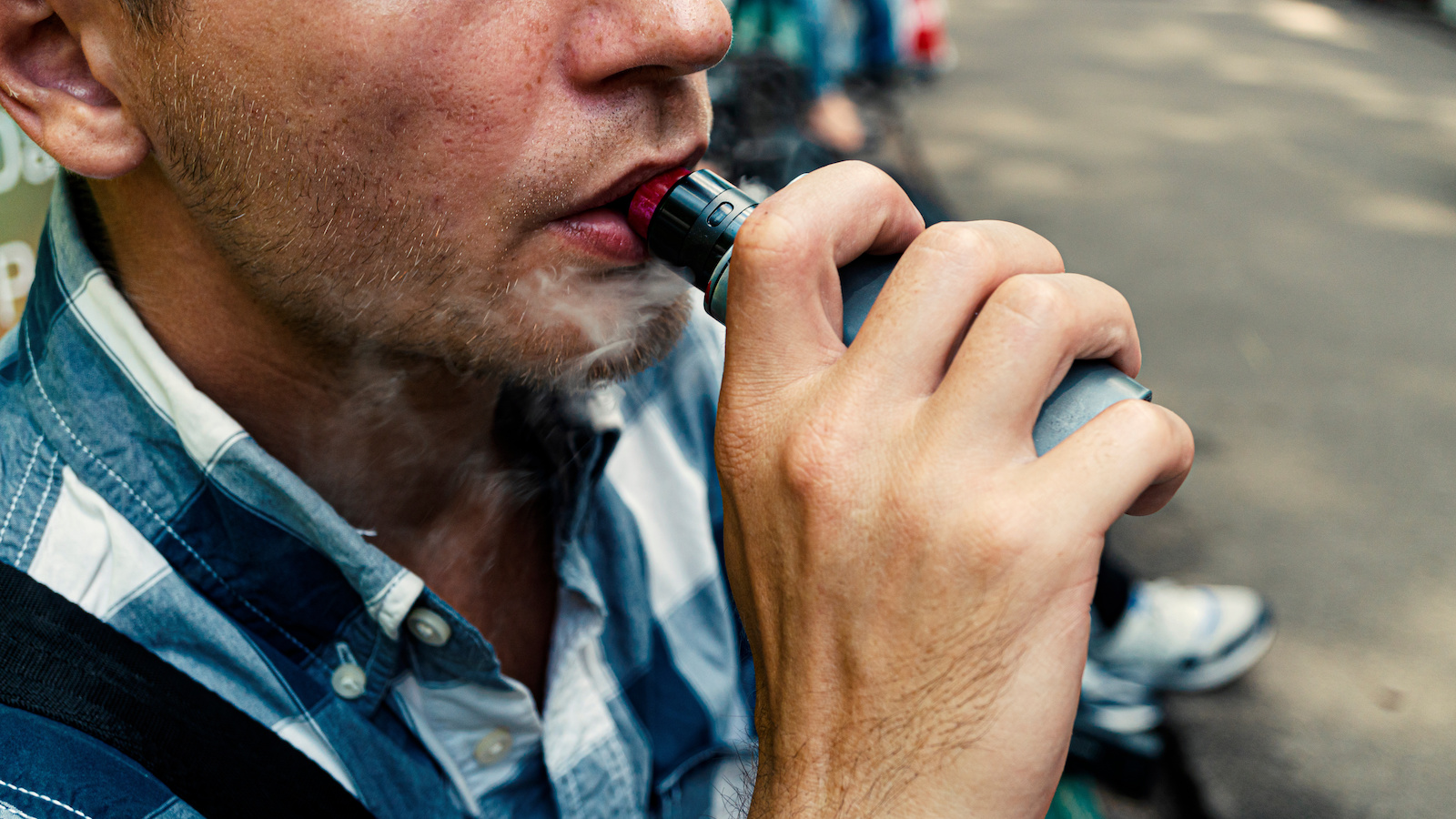
Table of Contents
America has been battling substance use disorders for a long time, and the big names have always gotten a lot of negative attention, like heroin, crystal meth, and more. Along these is the illicit use of prescription medications. Still, some other substances are available even easier, are more readily abused, and are available in nearly every gas station and grocery store in the area.
This substance has worked behind the scenes for many big-name killers like heart disease and cancer. For many years, it was freely promoted, sometimes even using cartoons. The substance that has helped millions to die yearly is still widely abused in frequencies and dosages, creating incredible chemical dependencies.
Nicotine has been a devastatingly addictive substance for decades, and while it was sometimes considered “under control” by legal sales regulations, this has forced the evolution of nicotine delivery. Making nicotine into a more marketable and appealing substance has been the key to keeping nicotine addiction alive and well in the US. One of the most common forms of this is called a Juul device, and it’s putting nicotine in a form that not only makes it more accessible but easier to become addicted to.
What Is a Juul Device?
A Juul device is a type of personal nicotine vapor administration system, often called an e-cigarette. The company that developed the Juul device has turned its sleek tech-inspired look into an incredibly popular nicotine delivery platform.
They began in 2016 and have since become one of the common standards for e-cigarette hardware and performance. It is estimated that Juul accounted for half of the entire e-cigarette market share after only two years on the market.
To provide nicotine and various flavors to the user, the Juul device allows a stream of heated vapor to be inhaled. To do this, the Juul device heats a small capsule, pod, or cartridge containing an oil solution of the flavors and measured nicotine. Each cartridge is often designed to provide the equivalent of 100-200 “puffs” of a normal cigarette, but that can vary wildly depending on how the individual uses the Juul device.
In mild cases where the user only uses the Juul device modestly and absorbs the average amounts of nicotine, one pod or cartridge should be the equivalent of an entire carton of cigarettes. Even in normal circumstances, this can be a highly addictive process, but the amount is often much higher in those who use a Juul device.
With cigarettes, the heat of the burning cigarette is often a very important limiting factor in how much an individual can smoke and how much nicotine they take in. When they use a Juul device, nicotine is delivered on a cooled vapor, making it much more comfortable to take much larger doses of nicotine than ordinary smokers. Unfortunately, this leads to a stronger addiction, chemical dependency, and a much more challenging detox and withdrawal stage.
Side Effects of Using a Juul Device
Many assume that using an e-cigarette like a Juul device makes it safer to consume nicotine when it may make it more hazardous depending on the user. Nicotine is a powerful substance that begins affecting the central nervous system within just a few seconds of inhalation and immediately causes the user’s blood pressure to elevate.
This elevated blood pressure is driven by an increased heart rate and a massive surge in dopamine levels, which makes the user feel relaxed or sedated. This sedation is false, however, since the dopamine covers up significant stress on the cardiovascular system when nicotine is taken. This effect occurs even with small doses like in some cigarettes, but it is more pronounced in those getting their nicotine from a Juul device or something similar.
Another potential element to the ease of abusing a Juul device is that they are incredibly portable and highly concealable. Since they are electronic and do not require any ignition or burning, there is no smoke due to their operation. This is a boon to those who find themselves addicted and often wonder if they could get away with vaping in a particular location.
Not only is this risky behavior indicative of the chemical and psychological dependence that nicotine can create, but it’s also potentially an indication of living with a substance use disorder. This is because using a particular substance even when it puts you in danger (even for getting the smallest citation) is one of the criteria used to help diagnose the disorder.
This is why it’s so important to get help as soon as it may be needed, so if you know of someone who may use nicotine in light of the damage to themselves, their professional or personal lives, or their domestic lives, it may be time to work with a professional. Most addictions can be detoxed quickly and comfortably in professional environments.
Direct Risks Of Nicotine Exposure From A Juul Device
While the risks of nicotine are relatively universal no matter how it’s used, it may not turn out the same way for those who prefer to enjoy their nicotine in a vaped or aerosolized form like from a Juul device may see a high-risk factor in several areas.
Heart Disease
One of the most common causes of death among smokers today is some form of heart disease or cardiovascular dysfunction. Smokers are at much higher risk of cardiovascular disease than non-smokers, sometimes as much as 30%. There is also some significant evidence that shows the nicotine obtained from a Juul device or similar vape unit.
Lung Damage
While vaping and the Juul device, in particular, haven’t been directly linked to any harmful side effects, there simply isn’t enough information to call them safe. Reports of certain adulterants in the Juul device pods or cartridges cause physical damage to the lung tissue. This can be deadly for those that may already have breathing conditions like asthma, COPD, or emphysema.
Inaccurate Dosages
One of the biggest problems with the Juul device is that getting a consistent nicotine hit is difficult in many situations. This leads to inconsistent performance and inconsistent nicotine dosage for the user. The nicotine amount can also be affected by circumstances like keeping the device too hot or using custom vape mods for their Juul device or e-liquid.
Cancer
When taking high-dose nicotine from incredibly new sources like a Juul device, it’s nearly impossible to determine the risk of each type of ailment. Some things are known, however. The e-liquid is a Juul device that exposes the airway to several carcinogenic compounds, leading to potential oral cancers. There is also measurable damage to DNA done to the lung tissues, leading to a greatly increased chance of lung cancer. Additional indications seem to show that the head and neck tissues are also at risk for cellular damage and mutation from the stresses caused by e-vapor.
Juul Device Withdrawal Symptoms
If you or someone you know has been using a Juul device and now might be wondering if they are addicted, one of the primary indicators of dependence is experiencing withdrawal symptoms when the substance isn’t being used. Many people experience withdrawal symptoms when they fail to take in enough nicotine to satisfy the level of dependence established in their bodies.
When someone is addicted to a Juul device and suddenly stops using nicotine, their body will be shocked since it will then be forced to continue to operate without nicotine. This will manifest differently in most people, but there will be some common elements, including:
- Irritability, frustration, and even anger
- Jitters
- Significant headaches
- Uncontrollable sweating
- Fatigue, tiredness, and grogginess
- Restlessness & insomnia
- Hunger feelings even after eating
- Cravings to use the substance again
With the trouble sleeping and the accompanying brain fog that is hard to shake for the first week or two of nicotine detox, you can expect significant reductions in your professional and educational performance during the early stages. You may even see a reduction in domestic abilities while the body adjusts.
How to Get Help if Addicted to Using a Juul Device
Suppose you may be addicted to using a Juul device to get your nicotine. In that case, it may be too difficult to quit on your own, but that’s why you should reach out today to professionals who can help you detox successfully and comfortably.
Some abuse situations can be challenging, specifically because of long periods of use or heavy use, which is why it’s even more important to work with medical supervision. If there are any complications, you know that help is already there, and you’ll be well taken care of.
Sources:
Ocean Recovery has strict sourcing guidelines and relies on peer-reviewed studies, academic research institutions, and medical associations for our references. We avoid using tertiary references as our sources. You can learn more about how we source our references by reading our editorial policy.
- PubChem. Nicotine. Accessed July 29, 2022. https://pubchem.ncbi.nlm.nih.gov/compound/89594
- Gallucci G, Tartarone A, Lerose R, Lalinga AV, Capobianco AM. Cardiovascular risk of smoking and benefits of smoking cessation. J Thorac Dis. 2020;12(7):3866-3876. doi:10.21037/jtd.2020.02.47
- Klawinski D, Hanna I, Breslin NK, Katzenstein HM, Indelicato DJ. Vaping the Venom: Oral Cavity Cancer in a Young Adult With Extensive Electronic Cigarette Use. Pediatrics. 2021;147(5):e2020022301. doi:10.1542/peds.2020-022301
- Bracken-Clarke D, Kapoor D, Baird AM, et al. Vaping and lung cancer – A review of current data and recommendations. Lung Cancer. 2021;153:11-20. doi:10.1016/j.lungcan.2020.12.030





